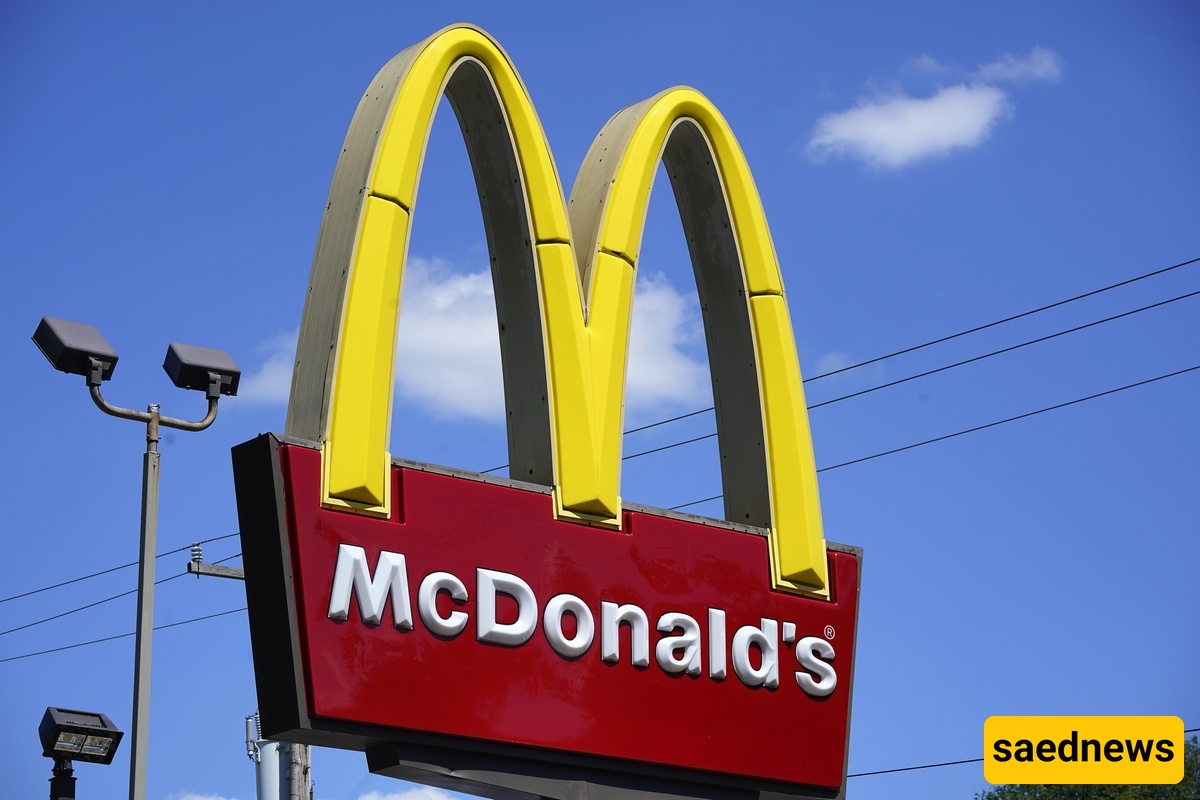SAEDNEWS:By launching the largest marketing campaign in its history, McDonald’s not only boosted sales and brand awareness to unprecedented levels, but also pioneered a new way of engaging with customers and leveraging pop culture—a smart move that once again placed the fast-food giant at the center of global attention.

According to Saed News, quoting CNN, in a world where brands are struggling to capture audience attention amid a flood of advertising messages, McDonald’s, with a historic marketing campaign, proved it can still rewrite the rules of the game. This campaign—described by many analysts as the largest promotional move in the brand's history—was a combination of market analysis intelligence, deep understanding of consumer culture, and creative use of media platforms. As a result, McDonald’s not only captured global attention, but also significantly increased its sales in a short period and sparked a new wave of brand loyalty.
Unlike traditional advertising that merely conveys a sales message, McDonald’s new campaign was built on a foundation of pop culture engagement. By identifying special moments from the collective memories of different generations—from nostalgic ads of past decades to direct references to today’s popular figures and artists—the brand targeted audience emotions. For example, collaborations with celebrities like Travis Scott, BTS, Cardi B, and special offers aligned with their fans’ lifestyles and preferences not only generated massive interaction on social media but also led to long lines forming at McDonald’s restaurants.
A key element in the success of this campaign was the flawless use of digital platforms and social media. In today’s world, brands seeking to influence the minds of Gen Z and Gen Alpha need a smart and authentic presence on platforms like TikTok, Instagram, and YouTube. McDonald’s leveraged these platforms and enlisted popular influencers to repost content, resulting in a massive viral movement. Millions of views and shares within days highlighted the astounding success of this initiative.
What set the McDonald’s campaign apart from a simple ad was its interactive and participatory approach. Customers were not just passive recipients of a promotional message—they became part of the brand’s narrative. The release of user-generated videos, hashtag challenges, and even the co-creation of certain menu items with the audience helped foster a sense of belonging. The consumer was no longer just a customer; they had become a member of the McDonald’s community.
Financially, the campaign also delivered remarkable results. According to recent quarterly financial reports, McDonald’s experienced double-digit global sales growth. Its market share increased in several key countries, and customer visits to restaurants rose significantly following the campaign. This indicates that consumers were not only influenced by the advertising but were also driven to make real purchases—something rarely achieved in many other ad campaigns.
Another key factor was innovation in the menu and customer experience. Alongside the marketing campaign, McDonald’s introduced special, limited-time menus available exclusively in certain countries or for a short duration. This strategy—by creating a sense of scarcity and exclusivity—boosted the urge to purchase. A fresh ordering experience, custom packaging, and new visual designs also gave customers a renewed sense of the brand.
Analysts believe this campaign was not just a simple advertising effort but a form of brand reinvention and a reminder of McDonald’s place in the consumer's mind. In a market increasingly filled with new fast-food chains promoting healthy lifestyles and diverse living styles, McDonald’s was able to reclaim consumer loyalty and attention through the language of culture, emotion, and experience.
It is also noteworthy that McDonald’s campaign wasn’t limited to a specific country but followed a global approach. Although messages, images, and personalities were localized based on regional culture, the overall spirit of the campaign—emotional connection through pop culture—remained consistent worldwide. This ability to localize content while preserving a global identity is a key success factor for multinational brands like McDonald’s.
Ultimately, the success of this campaign was not merely due to a large budget, but the result of years of experience, behavioral analysis, precise market understanding, and the courage to implement bold ideas. By blending tradition with innovation, memory with technology, and entertainment with strategy, McDonald’s presented a new model for 21st-century marketing. A model that may inspire many other brands—but one unlikely to be replicated without a deep understanding of the philosophy behind it.
McDonald’s has proven that in the information age and the era of social media, the winning brands are those that become part of the audience’s everyday life and culture—not the ones that simply shout, “Choose us.” And that is the most important lesson to be learned from the largest marketing campaign in McDonald’s history.

